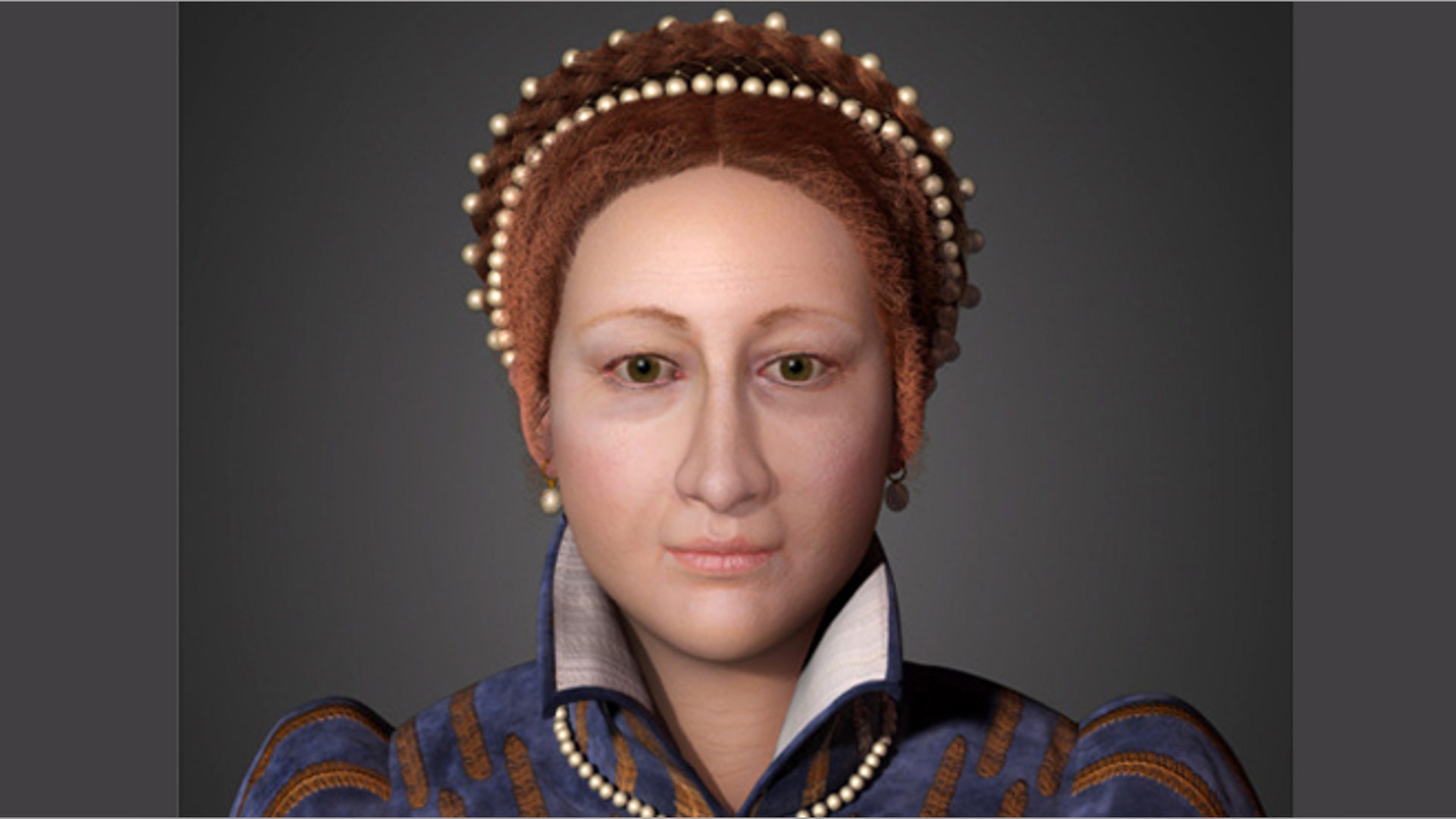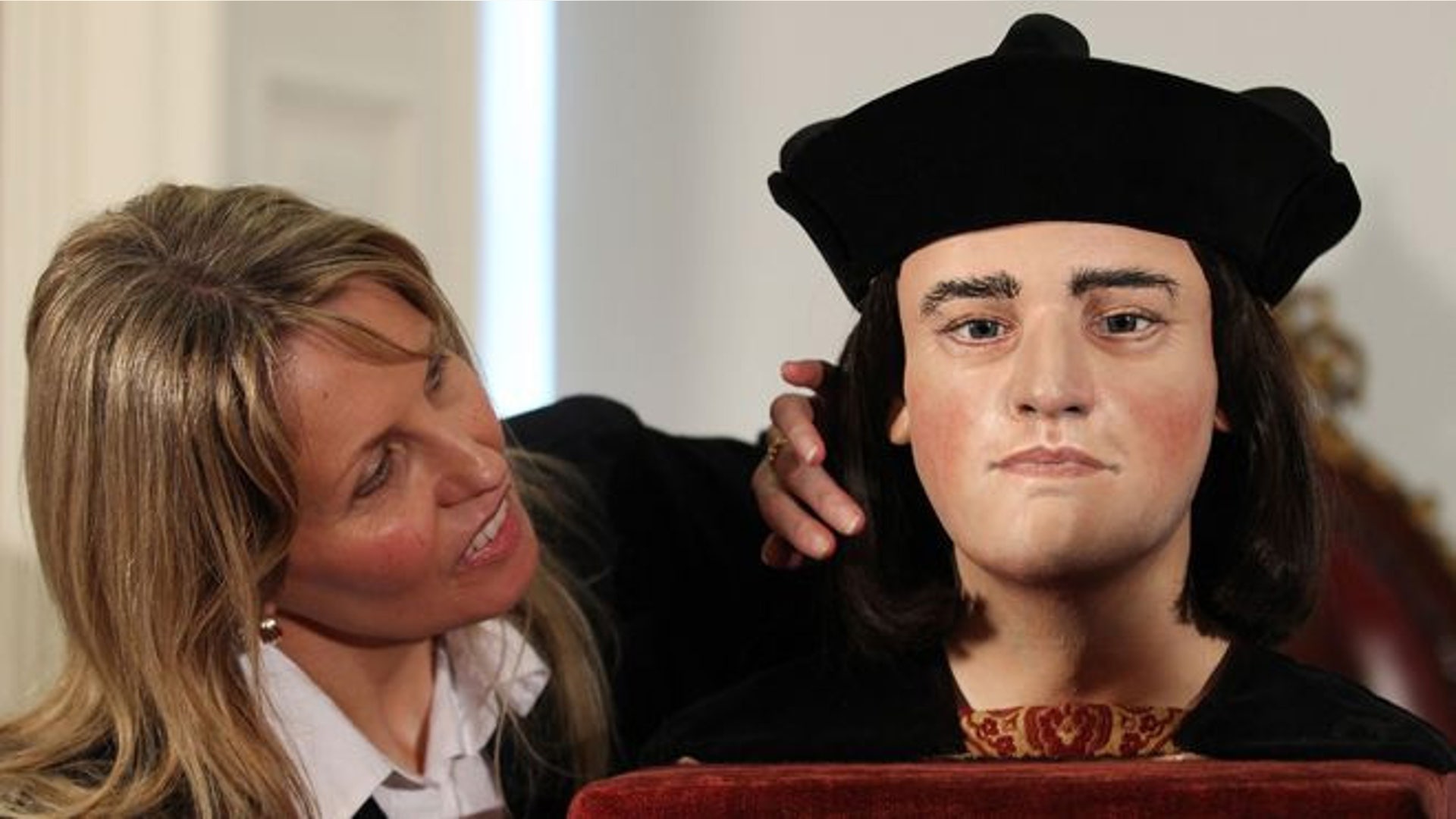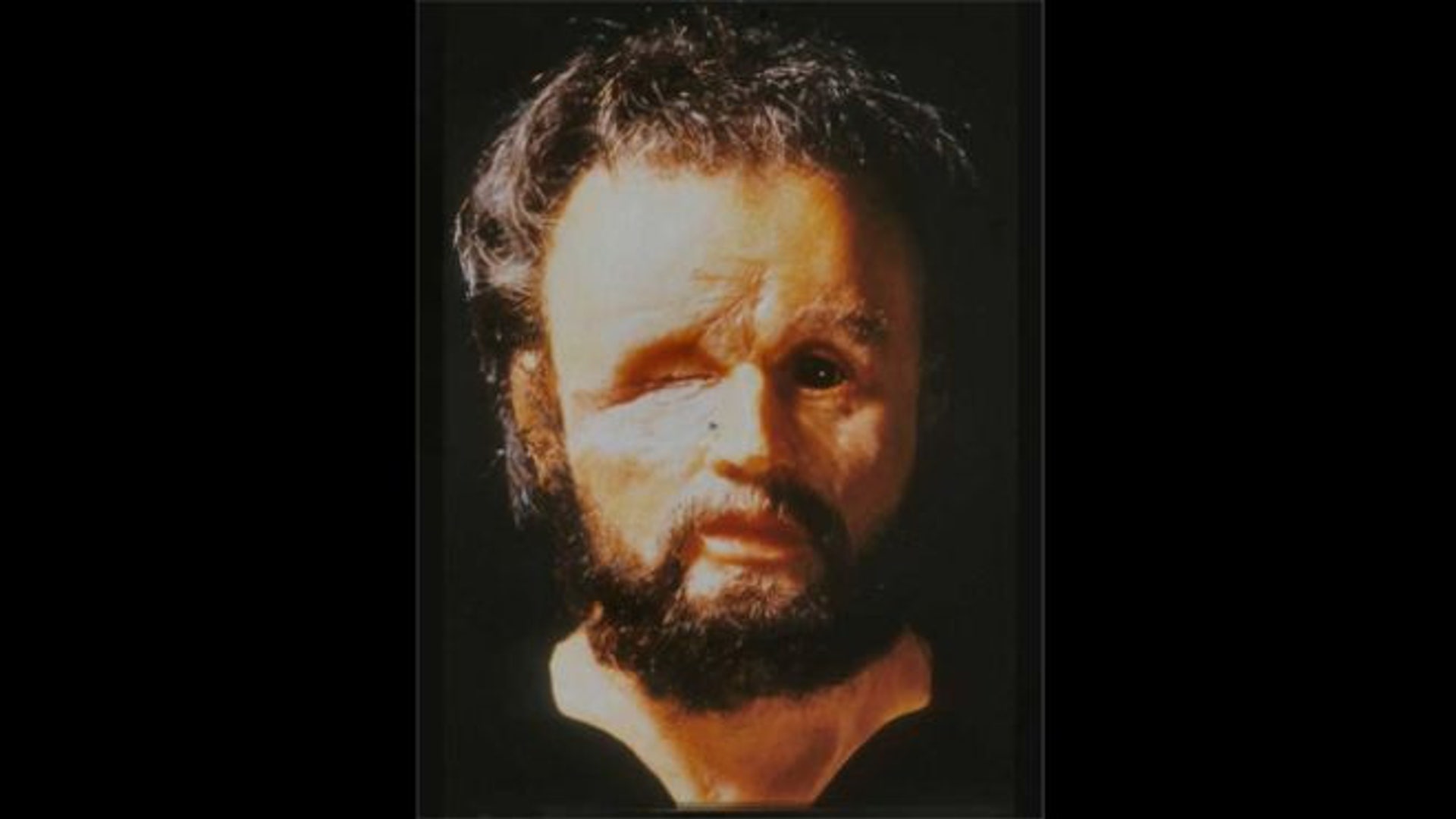Move Back
ADVERTISEMENT
Skip- Published11 Images
Facing history: Facial reconstructions bring ancient history to life
Researchers, artists and forensics experts use the latest technologies to reconstruct historic faces.
![facing_history]()
![maryqueenofscotsreconstruction]() The face of Mary, Queen of Scots, as she would have looked at the time of her reign, has been brought back to life by a team of experts from the University of Dundee. A 3D virtual sculpture of Mary's face is on display at the National Museum of Scotland through November 17, 2013. The same team of researchers worked on other facial reconstruction projects and brought back to life the faces of Bach, Cleopatra's sister, Simon of Sudbury and Richard III.read moreCaroline Wilkinson/Janice Aitken/University of DundeeShare
The face of Mary, Queen of Scots, as she would have looked at the time of her reign, has been brought back to life by a team of experts from the University of Dundee. A 3D virtual sculpture of Mary's face is on display at the National Museum of Scotland through November 17, 2013. The same team of researchers worked on other facial reconstruction projects and brought back to life the faces of Bach, Cleopatra's sister, Simon of Sudbury and Richard III.read moreCaroline Wilkinson/Janice Aitken/University of DundeeShare![richard_three]() Richard III was king of England, but for centuries he lay without shroud or coffin in an unknown grave, and his name became a byword for villainy. A newly released facial reconstruction reveals what the long lost king would have looked like, with a pageboy haircut, dark hair and prominent eyebrows, and a warm cast to his skin hinting at the good life a king would have enjoyed.read moreAP PHOTO/PA, GARETH FULLERShare
Richard III was king of England, but for centuries he lay without shroud or coffin in an unknown grave, and his name became a byword for villainy. A newly released facial reconstruction reveals what the long lost king would have looked like, with a pageboy haircut, dark hair and prominent eyebrows, and a warm cast to his skin hinting at the good life a king would have enjoyed.read moreAP PHOTO/PA, GARETH FULLERShare![civil_war_faces]()
![mummy_woman]() Professional forensic artist Victoria Lywood worked with a team of researchers to create 3D models of three ancient Egyptian mummies. This model is of a woman who died around the age of 20 nearly 2000 years ago. CT scans reveal that when she was buried her hair was tied in an elaborate pattern popular in the 2nd century AD.read moreCourtesy Victoria LywoodShare
Professional forensic artist Victoria Lywood worked with a team of researchers to create 3D models of three ancient Egyptian mummies. This model is of a woman who died around the age of 20 nearly 2000 years ago. CT scans reveal that when she was buried her hair was tied in an elaborate pattern popular in the 2nd century AD.read moreCourtesy Victoria LywoodShare![otzi_iceman]()
![police_sketch_mummy]() The face of a long-dead mummy has been brought back to life through forensic science. Based on CT-scans of the skull of the ancient Egyptian mummy Meresamun, two artists independently reconstructed her appearance and arrived at similar images of the woman. Meresamun, a temple singer in Thebes (ancient Luxor) at about 800 B.C., died of unknown causes at about age 30. Until recently, modern viewers of the University of Chicago-owned mummy have had to guess about the woman behind the mask.read moreMichael Brassell for the University of ChicagoShare
The face of a long-dead mummy has been brought back to life through forensic science. Based on CT-scans of the skull of the ancient Egyptian mummy Meresamun, two artists independently reconstructed her appearance and arrived at similar images of the woman. Meresamun, a temple singer in Thebes (ancient Luxor) at about 800 B.C., died of unknown causes at about age 30. Until recently, modern viewers of the University of Chicago-owned mummy have had to guess about the woman behind the mask.read moreMichael Brassell for the University of ChicagoShare![henry_four]() A reconstruction of the mummified skull matched Henry IV's features. Researchers, led by forensic medical examiner and osteo-archaeologist Philipp Charlier of University Hospital R Poincaré in Garches, France, compared the head with sculptures and portraits of Henry, who had been assassinated in 1610, and digitally reconstructed the face. The result was a dead ringer for the beloved king.read morePHILIPPE CHARLIER/BRITISH MEDICAL JOURNALShare
A reconstruction of the mummified skull matched Henry IV's features. Researchers, led by forensic medical examiner and osteo-archaeologist Philipp Charlier of University Hospital R Poincaré in Garches, France, compared the head with sculptures and portraits of Henry, who had been assassinated in 1610, and digitally reconstructed the face. The result was a dead ringer for the beloved king.read morePHILIPPE CHARLIER/BRITISH MEDICAL JOURNALShare![english_explorers]() In 1845, two ill-fated British ships headed for the Canadian Arctic in the hope of discovering the Northwest Passage to the Pacific Ocean. More than two decades later, the nearly complete skeleton of one of the explorers was recovered from a shallow, stone-covered grave on King William Island in the Canadian Arctic. Researchers reconstructed the explorer's face (right) and compared it to pictures of the expedition's officers to find a likely match.read moreNational Maritime Museum/ English HeritageShare
In 1845, two ill-fated British ships headed for the Canadian Arctic in the hope of discovering the Northwest Passage to the Pacific Ocean. More than two decades later, the nearly complete skeleton of one of the explorers was recovered from a shallow, stone-covered grave on King William Island in the Canadian Arctic. Researchers reconstructed the explorer's face (right) and compared it to pictures of the expedition's officers to find a likely match.read moreNational Maritime Museum/ English HeritageShare![philip_two]()
![hobbit_face]() Researchers have revealed what the face of a controversial ancient human nicknamed "the Hobbit" might have looked like. With a background in forensic science, Hayes was able to flesh out the face of the 3-foot tall, 30-year-old female based on remains that were uncovered in the Liang Bua cave on the remote Indonesian island of Flores in 2003.read moreUNIVERSITY OF WOLLONGONGShare
Researchers have revealed what the face of a controversial ancient human nicknamed "the Hobbit" might have looked like. With a background in forensic science, Hayes was able to flesh out the face of the 3-foot tall, 30-year-old female based on remains that were uncovered in the Liang Bua cave on the remote Indonesian island of Flores in 2003.read moreUNIVERSITY OF WOLLONGONGShare- Published11 Images
Facing history: Facial reconstructions bring ancient history to life
Researchers, artists and forensics experts use the latest technologies to reconstruct historic faces.
Move Forward
- Facing history: Facial reconstructions bring ancient history to life











Thumbnail View
Image 0 of 11










